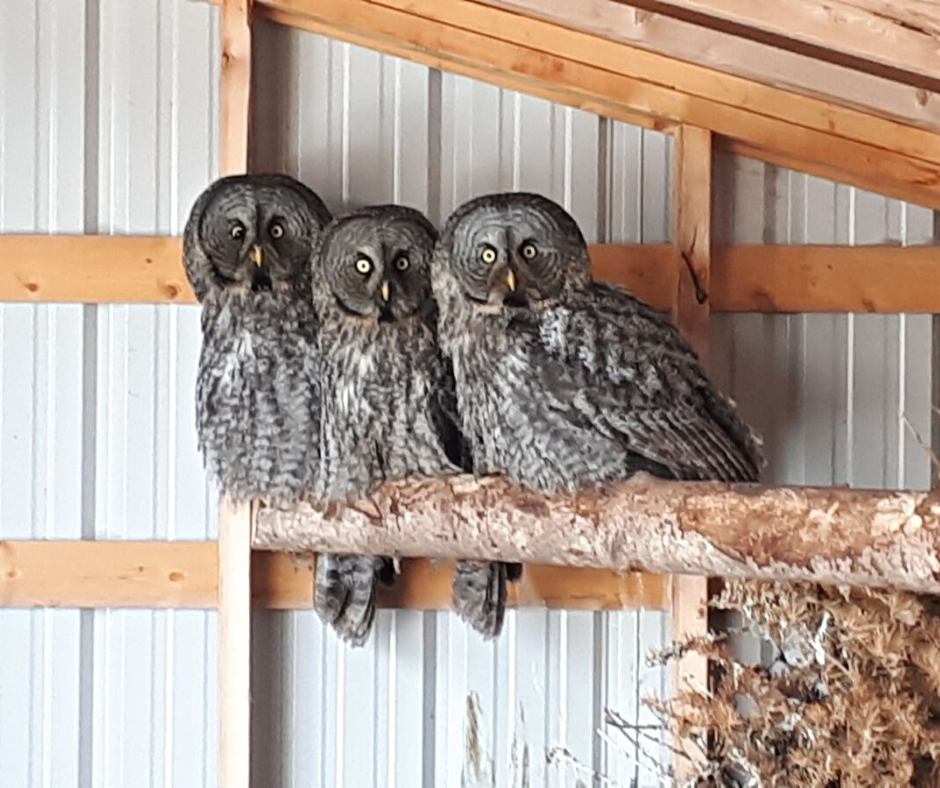MRWC sees a large number of Great Gray Owls admitted annually as our facility is right within their range. We are even fortunate enough to have a pair of Great Gray Owls nesting on our property. The most common injury is impact related damage such as concussions and fractures as a result of collisions with vehicles.
Great Gray Owls are the largest owl in Canada but interestingly, not the heaviest. With a wingspan of 55-60", a huge head, and a length of 23-33", they surprisingly have an average weight of only 1.5-2.5 lbs. Great Horned and Snowy Owls are smaller but outweigh a Great Gray.
These birds are not only found in the northern boreal forests of Canada but can be found across the Northern Hemisphere, in places like Scandinavia or Russia. They generally prefer deep woods adjacent to open meadows with water nearby.
Great Grays silently hunt both day and night searching for small prey such as mice and voles. Their size often fools people into thinking they can take much bigger prey. They can be found sitting serenely on fence posts, focusing intently at the ground, waiting for rodents. If you quietly approach, they often continue the hunt without being bothered by your presence.
They breed in May, having 2-5 fluffy, grey chicks using dead tree stumps or old hawk nests to build their nest. Both the male and female care for the young and protect the nest.


